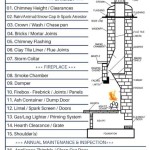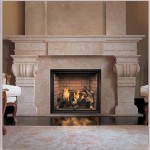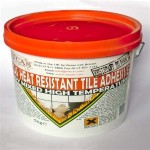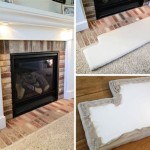How To Build Shelves on Either Side of a Fireplace
Adding built-in shelves flanking a fireplace can transform a living space, providing both aesthetic appeal and functional storage. This project, while requiring careful planning and execution, allows for customization to fit the specific dimensions and style of any home. This article details the process of constructing shelves on either side of a fireplace, offering a comprehensive guide for achieving a professional-looking result.
Planning and Preparation: Defining Requirements and Gathering Materials
Before commencing construction, thorough planning is essential. The initial step involves assessing the available space and determining the desired dimensions and style of the shelving units. This includes measuring the width, height, and depth of the area on either side of the fireplace, considering any architectural features such as molding or trim that might affect the design. It is also crucial to decide on the number of shelves, their spacing, and their intended use. Will these shelves primarily hold books, decorative items, or a combination of both? This will influence the shelf depth and load-bearing capacity requirements.
Next, define the style of the shelves to complement the existing decor. Options range from modern minimalist designs to traditional styles with crown molding and detailed trim. Consider the material to be used. Common choices include softwood like pine, hardwood like maple or oak, and manufactured wood products like MDF (Medium-Density Fiberboard) or plywood. Each material offers different aesthetic qualities, structural properties, and cost considerations. Pine is an economical choice that is easy to work with, but it may require more preparation for a smooth finish. Hardwoods offer greater durability and a more refined appearance but are typically more expensive. MDF provides a smooth, paintable surface and consistent density, making it suitable for intricate designs, while plywood offers good strength and stability for shelving.
Once the design and materials have been selected, create a detailed plan or sketch that includes all measurements and specifications. This will serve as a blueprint during the construction process, minimizing errors and ensuring a cohesive result. Accurate measurements are paramount; double-check all figures before cutting any materials.
Gather all the necessary tools and materials before starting construction. Essential tools include a measuring tape, level, stud finder, pencil, circular saw or table saw, miter saw (for precise angle cuts), drill, screwdriver, sander, and a paint sprayer or brushes. Safety gear, such as safety glasses and a dust mask, is also critical. Materials required include the chosen wood for the shelves and supports, fasteners such as screws and nails, wood glue, primer, paint or stain, and any desired decorative elements like molding or trim.
Construction and Installation: Building the Shelving Units
The construction process begins with building the support structure for the shelves. This generally involves creating a framework of vertical supports, or stiles, that are attached to the walls. Use a stud finder to locate wall studs and mark their positions. These studs will provide the necessary support for the shelves, ensuring they can bear the intended weight. Attach the vertical supports to the studs using screws or nails, ensuring they are plumb and level. The spacing between the supports will depend on the length and thickness of the shelves, as well as the expected load.
Next, cut the shelving material to the required dimensions using a circular saw or table saw. Ensure all cuts are straight and accurate. For a more refined appearance, use a miter saw to cut angles for corners or decorative trim. Sand all edges and surfaces to remove any splinters or imperfections, creating a smooth surface for finishing.
Attach the shelves to the support structure using screws and wood glue. Apply glue to the edges of the supports before positioning the shelves, then secure them with screws. Use a level to ensure each shelf is perfectly horizontal. Clamps can be used to hold the shelves in place while the glue dries, providing a stronger and more secure bond. For added support, consider adding cleats – small strips of wood – to the inside of the support frame, providing an additional surface for the shelves to rest upon.
For floating shelves, a different approach is required. Floating shelves appear to be suspended without visible supports. This effect is achieved by using hidden brackets or metal rods that are embedded into the shelves and attached to the wall studs. The installation process for floating shelves is more complex and requires precise drilling and alignment. Ensure the brackets are securely anchored to the wall studs, as they will bear the entire weight of the shelves and their contents.
After the shelves are installed, fill any screw holes or imperfections with wood filler. Allow the filler to dry completely, then sand it smooth. Apply a primer coat to the entire shelving unit, preparing the surface for paint or stain. Primer helps to seal the wood and provides a better surface for the finish coat, ensuring a more even and durable result.
Finishing and Detailing: Achieving a Polished Appearance
The final step involves applying the desired finish to the shelving units. Choose a paint or stain that complements the existing decor and provides the desired level of protection. For a painted finish, apply multiple thin coats, allowing each coat to dry completely before applying the next. Sand lightly between coats to create a smooth, even surface. For a stained finish, apply the stain evenly, following the manufacturer's instructions. Wipe off any excess stain to prevent blotching and allow it to dry completely. Apply a clear coat of polyurethane or varnish to protect the stained surface and enhance its durability.
Adding decorative elements can significantly enhance the appearance of the shelving units. Consider adding crown molding to the top of the units, baseboards to the bottom, and decorative trim to the edges of the shelves. These details can create a more finished and professional look, seamlessly integrating the shelves into the existing architectural style. Attach the molding and trim using nails or adhesive, ensuring all pieces are properly aligned and securely fastened.
Pay attention to the details when installing trim. Miter the corners of the molding to create clean, seamless joints. Fill any gaps or imperfections with caulk, then paint or stain the caulk to match the surrounding trim. This will create a more polished and professional appearance. Use a nail gun for a faster and more efficient installation of trim, ensuring the nails are properly set and concealed.
Once the finish is dry and all decorative elements are installed, carefully inspect the shelving units for any remaining imperfections. Touch up any areas as needed, and clean the shelves thoroughly. Finally, arrange the items on the shelves in a visually appealing manner, creating a balanced and harmonious display. Consider using a mix of books, decorative objects, and personal items to add interest and personality to the shelving units. Proper lighting can also enhance the appearance of the shelves, highlighting the items on display and creating a warm and inviting atmosphere.

Shelves And Built Ins On Either Side Of The Fireplace In Living Room Home

Floating Shelves Either Side Of Fireplace Bookcases And Storage Living Room Decor Built In Wall Units With

Fireplace Alcoves Design Ideas

Floating Shelves On Both Sides Of The Fireplace Give A Sense Balance And Harmony Living Room Bedroom Decorating

Floating Shelves Around A Fireplace

Diy Built Ins Cabinets Designing In For The Johnson Files

Little Updates And Fireplace Plans The Inspired Room

White Built In Bookshelves Around The Fireplace Green With Decor

What Kind Of Shelves Should I Put On Either Side The Fireplace Hometalk

Bookshelves Fill Nooks On Either Side Of Fireplace Design Ideas








